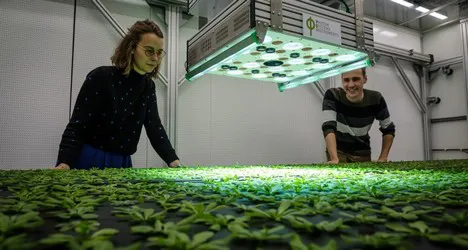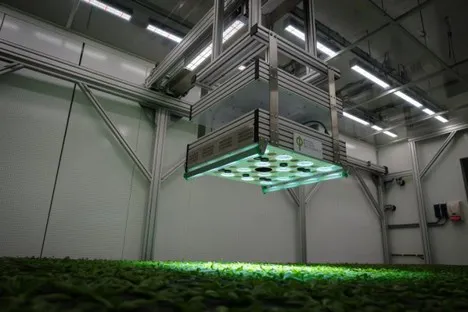Wageningen University & Research (WUR) and the Photosynthesis 2.0 Research Fund (P2RF) are to establish a new independent institute for research on photosynthesis. “A key objective is to learn how we might improve the efficiency of photosynthesis in food crops. That could contribute significantly to feeding the world”, says Ernst van den Ende, a member of the WUR Board of Directors. This decision was announced today during the 104th Dies Natalis of the university.

The provisional name of the institute is the Institute for Advanced Studies for Photosynthetic Efficiency (IASPE). A total of 62 million euros will be invested in the new institute over the next decade. P2RF, which was founded by Egbert van der Pol, Menno Witteveen and Maarten Koopman, will contribute 50 million. WUR contributes 12 million, mainly in personnel and the use of laboratories at a reduced fee.
Witteveen: “The world population is expected to increase to 10 billion by the year 2050 and all these mouths must be fed with a planet that currently feeds 7 billion. The FAO has calculated that this can only be achieved through new scientific breakthroughs. One solution could be to grow crops that use sunlight more efficiently. Increasing our knowledge on these processes is, therefore, literally a matter of life and death.”
“That is why my partners and I approached WUR, the world-renowned institute in sustainable food security. We are delighted to work with WUR and to get other institutes and organisations involved. From growing in greenhouses to open fields, together we want to contribute to the world food supply through fundamental research”.

Why is research on photosynthesis needed
Photosynthesis is the most important biological process in the world. Energy from sunlight transforms water and CO2 from the atmosphere into oxygen and sugars. The plant uses sugars as building blocks to grow and to bear fruit. The efficiency of photosynthesis in field conditions leaves quite a bit to be desired. Plants use an average of only 1 per cent of all the solar energy that reaches the earth, while this could easily be 5 or 6 times more.
“This can, and should, change”, says Louise O. Fresco, President of the WUR Executive Board. “If plants could absorb twice the amount of light, this would already have a huge impact on food production. That would be fantastic news for the Global South, but even better: this may teach us how to utilise such chemical-physical processes to generate sustainable energy”.
Several plant varieties have already adapted to rapid growth through natural selection and have achieved a much higher photosynthesis efficiency than comparable varieties. One such plant is grey mustard, a plant native to the Mediterranean.
Ernst van den Ende: “We want to learn from these plants how we can use their genetic developments to induce a similar transformation in food crops. Better photosynthesis should lead to higher yields in existing crops. That means we would require less farmland, enabling us to better protect nature areas as well”.
Young researchers
The institute plans to produce 30 PhD students and 60 postdocs in the coming years. “We already know quite a lot about how photosynthesis works”, Van den Ende clarifies, “but there is still uncharted territory in improving its efficiency. This funding allows us to increase research capacity within Europe significantly. A wonderful opportunity for new scientific careers”.
 For more information:
For more information:
Wageningen University & Research
www.wur.nl
